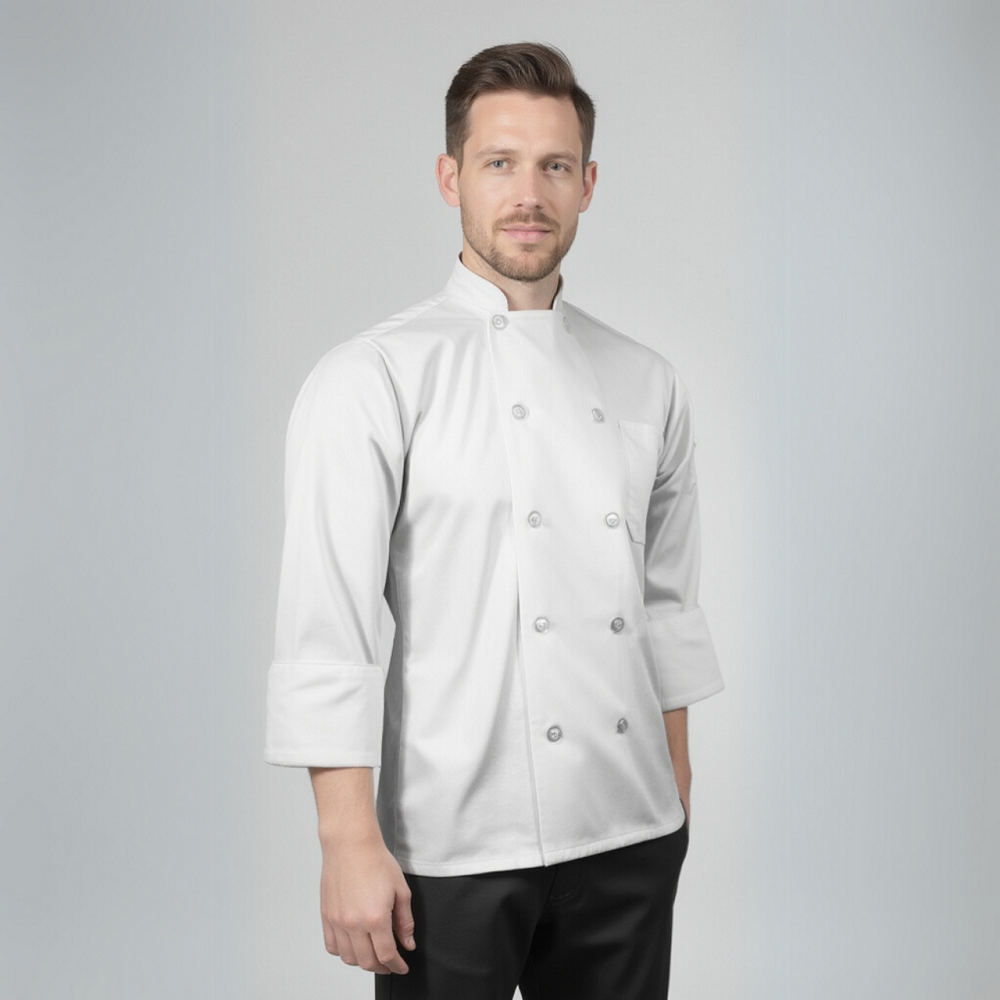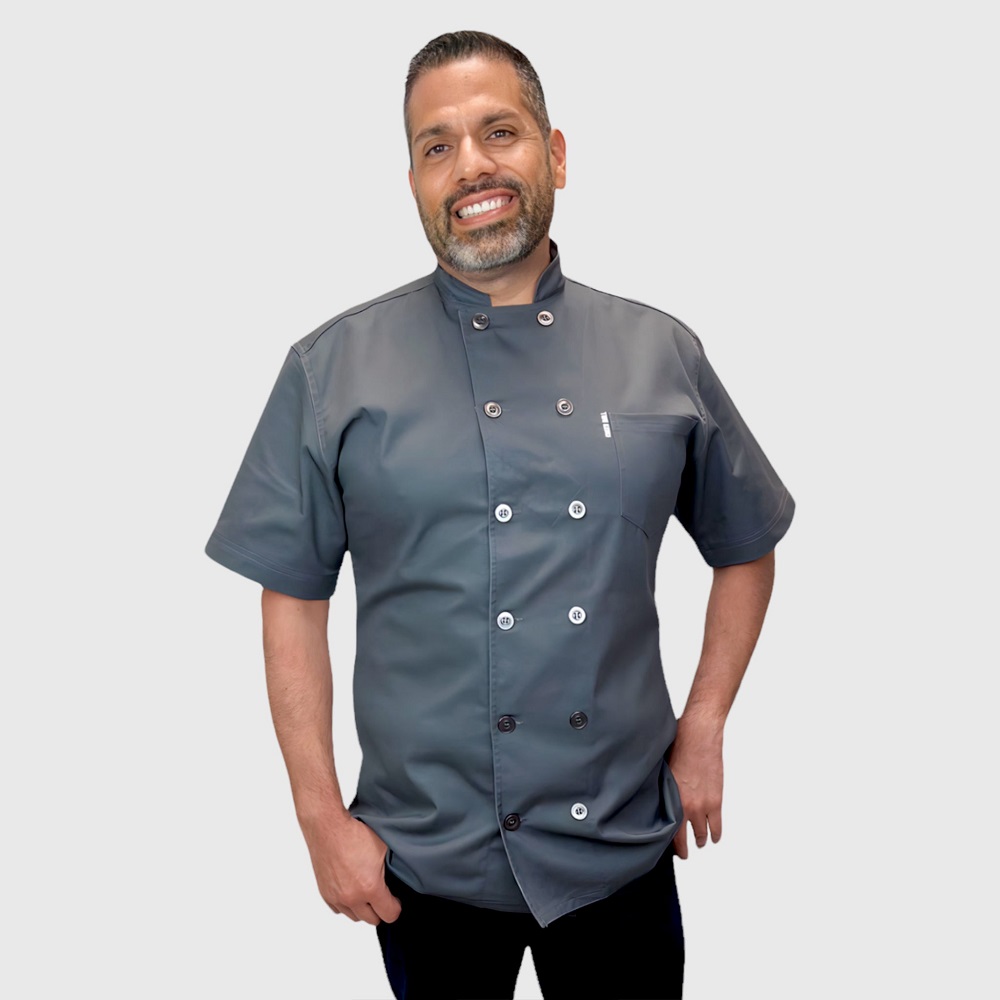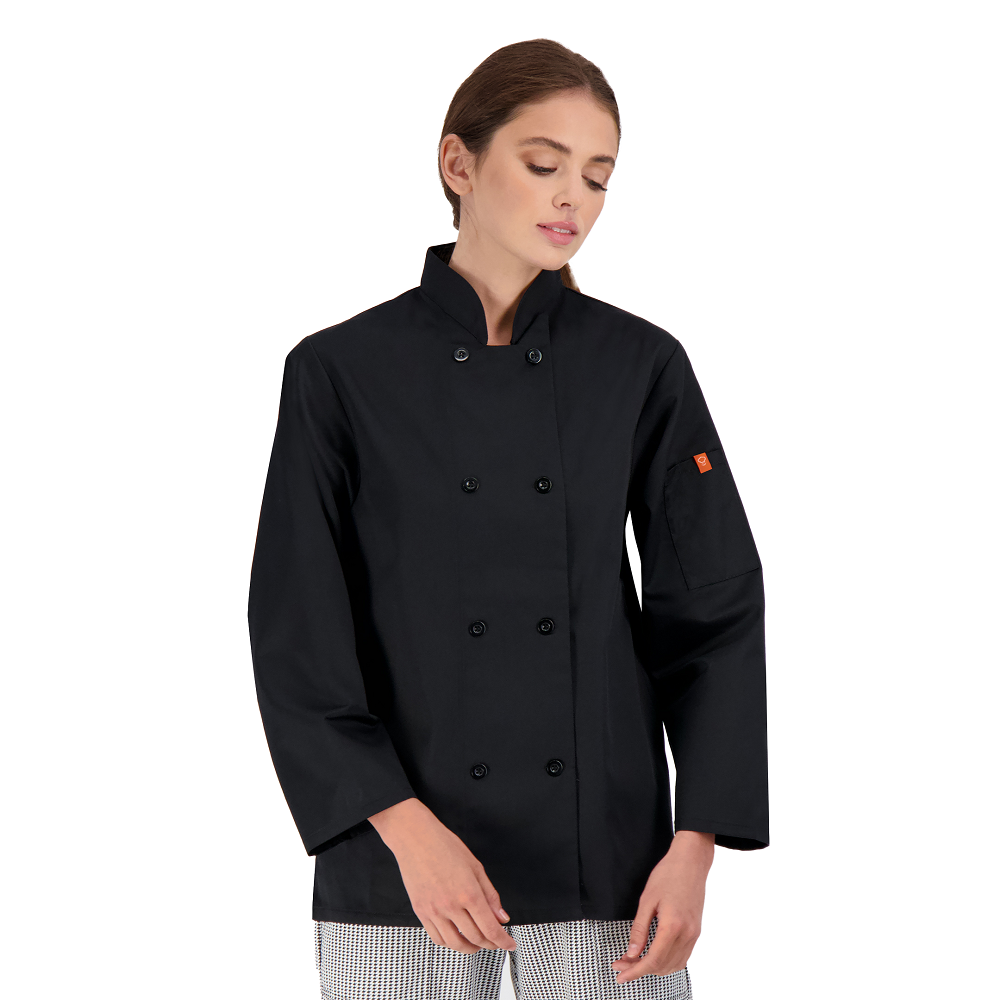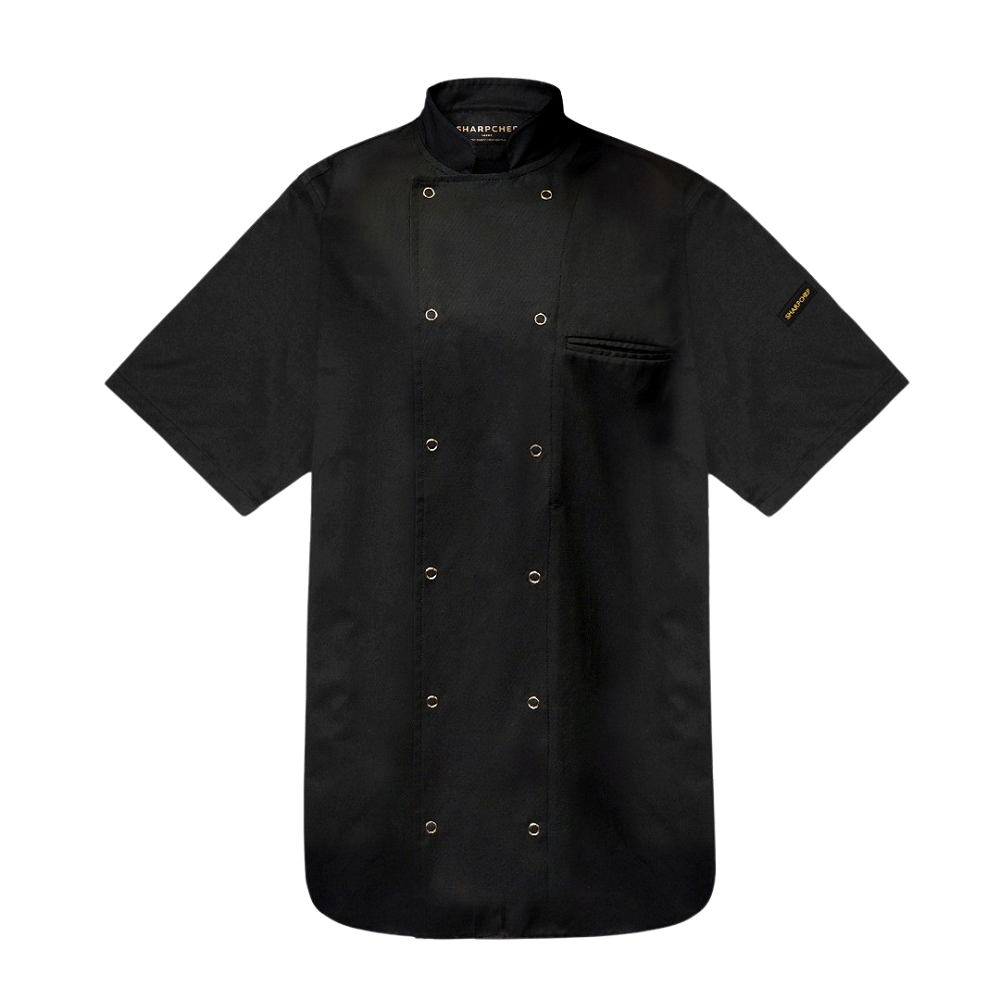
A chef coat, also known as a chef’s jacket, is an essential part of a chef’s uniform. It serves not only as a protective garment but also symbolizes professionalism and culinary expertise. Given the demands of a busy kitchen environment, maintaining the cleanliness and integrity of your chef coat is of paramount importance. Proper care can enhance the longevity of the coat, ensuring it retains its functionality and appearance over time. This article will provide insights into the importance of caring for your chef coat, practical cleaning tips, and storage suggestions to keep it looking fresh and professional.
The Importance of a Chef Coat
Purpose of the Chef Coat
A chef coat is designed for both protection and style. It serves as a barrier against spills, stains, and heat, safeguarding the chef’s skin from cooking hazards. The double-breasted design allows chefs to reverse the coat for a clean look, even after a messy shift. Additionally, the sturdy fabric helps to keep the chef cool in a hot kitchen while protecting them from burns. Understanding the utility of the chef coat highlights the need for proper care and maintenance.
Professional Appearance
A well-maintained chef coat contributes to a chef’s professional appearance, instilling confidence in their culinary skills. Kitchens are high-pressure environments where presentation matters, both in food and attire. A clean, crisp chef coat reflects pride in one’s work and attention to detail. It also fosters respect from colleagues and patrons alike. The visual impact of a neat uniform cannot be underestimated in the culinary field, where first impressions count.

Regular Cleaning Practices
Daily Maintenance
Daily maintenance is crucial for keeping your chef coat in optimal condition. At the end of each shift, check for any stains or spills that need immediate attention. Wipe down any surfaces before putting on your coat to minimize contaminants. If you notice minor stains, treat them immediately with cold water and a mild detergent. Acting quickly can prevent stains from setting in. Taking time for daily maintenance sets the stage for a longer-lasting chef coat.
Washing Frequency
Cleaning frequency will depend on how often you work in the kitchen and how dirty your coat gets during shifts. Ideally, a chef coat should be washed after every use to keep it fresh and free of odors. For those who work in particularly messy environments, washing after every shift is essential. However, if you need to wear it multiple times before laundering, consider using an odor-neutralizing spray in between washes.

Proper Washing Techniques
Machine Washing
When it comes to washing your chef coat, machine washing can be effective, but you should always check the care label for specific instructions. Most cotton or cotton-blend coats can be washed in cold water on a gentle cycle. Using colder water helps prevent shrinking and fading of colors. Avoid overcrowding the washing machine, as this can prevent thorough cleaning. It’s also wise to remove any stains beforehand with a spot treatment to ensure the best results.
Hand Washing as an Alternative
For those who prefer a gentler approach, hand washing your chef coat can be an alternative. Fill a basin or sink with cold water and add a mild detergent. Gently agitate the water to create suds, then submerge the coat. Allow it to soak for about 20–30 minutes. After soaking, gently scrub any stained areas with a soft brush or cloth. Rinse thoroughly in cold water until all detergent is washed out. Hand washing can help maintain the fabric’s integrity while keeping your chef coat looking pristine.

Drying Methods
Air Drying
Air drying your chef coat is the most recommended method for maintaining its quality. After washing, avoid wringing out the coat, as this can damage the fabric. Instead, gently shake it to remove excess water and hang it on a sturdy hanger or a laundry drying rack. Make sure to hang it in a well-ventilated area, avoiding direct sunlight to prevent fading. Air drying helps preserve the coat’s shape, durability, and color integrity over time.
Machine Drying Precautions
If you must use a dryer, take precautions to ensure minimal damage. Use a low heat setting to reduce the risk of shrinking or warping the fabric. It is advisable to remove the coat while it is still slightly damp to prevent over-drying. Once out of the dryer, shake it out gently and hang it up immediately. While air drying is preferred, following these guidelines can make machine drying a viable option.
Ironing and Pressing
Proper Ironing Techniques
A pressed chef coat can enhance your overall appearance. If your coat is wrinkled after washing, ironing or steaming is necessary. Use a medium to high heat setting, ensuring the iron is suitable for the fabric type. Always iron the coat inside out to avoid direct exposure to high heat, which can cause scorching or shiny marks on the fabric. Be cautious when ironing areas with stitching or embellishments, as they might not withstand the heat.
Steaming Alternatives
Using a garment steamer is another effective method for removing wrinkles without direct contact. Steamers are gentle on fabrics and can refresh your coat quickly. Hang the coat on a hanger, and hold the steamer nozzle about an inch away, moving it up and down the fabric. This technique helps relax the fibers and eliminate wrinkles without applying pressure. Choosing to steam instead of iron can help preserve the fabric’s texture and prevent accidental damage.

Storage Solutions
Proper Hanging Techniques
How you store your chef coat can greatly impact its longevity. After washing and pressing, store your chef coat on a sturdy hanger designed for heavier garments. Ensure the hanger is wide enough to support the coat’s shoulders, retaining its shape. Avoid hanging it on thin hangers that could lead to stretching or misshaping. Proper storage techniques will ensure your coat is ready for use whenever you need it.
Seasonal Considerations
If you find yourself not needing your chef coat seasonally, consider storing it carefully. Before putting it away, make sure it is thoroughly cleaned to avoid any stains setting in. Use a garment bag to protect it from dust and potential pests. Storing the coat in a cool, dry place helps prevent the development of mildew and protects the fabric from damage. Doing this correctly can keep your chef coat looking new for the next time you need it.

Choosing Quality Fabrics
Selecting the Right Material
Choosing a chef coat made from high-quality fabric can greatly affect its durability and ease of maintenance. Common materials include cotton, polyester, or a blend of both. Cotton offers breathability and comfort, making it a popular choice in hot kitchen environments. On the other hand, polyester blends often provide increased durability and stain resistance. When selecting your coat, consider the working conditions and your preference for comfort versus durability. Investing in a well-made chef coat can lead to long-term satisfaction.
Performance Features
Many modern chef coats come equipped with performance features, such as moisture-wicking fabrics and antimicrobial treatments. Moisture-wicking materials help to keep you dry in a hot kitchen, and antimicrobial treatments reduce odors and the buildup of bacteria. When opting for a chef coat, reviewing these features can enhance your comfort and hygiene during long hours of cooking. Selecting a coat that meets your specific needs can improve your overall kitchen experience.
The Role of Professional Cleaning Services
When to Consider Professional Help
In some cases, the wear and tear on your chef coat may warrant professional cleaning services. If your coat has stubborn stains, heavy grease deposits, or has become overly worn, hiring a professional cleaner may be a worthwhile investment. Professional dry cleaners have special treatments and equipment that can effectively clean delicate fabrics or remove tough stains without compromising the coat’s integrity.
Benefits of Dry Cleaning
Dry cleaning can extend the life of your chef coat by using gentle solvents. This method can remove oils and grease that regular washing may leave behind. Additionally, professional cleaners can provide specialty services, ensuring your coat looks fresh and retains its form. Opting for this service occasionally may be more beneficial, especially if your work environment is particularly messy.
Conclusion: Caring for Your Chef Coat
In conclusion, caring for your chef coat is vital for ensuring its longevity and effectiveness in the kitchen. By understanding how to maintain a clean, functional, and stylish coat, you can promote a professional appearance and enhance your cooking experience. Regular cleaning, proper storage, and wise choices about material will significantly contribute to your chef coat’s condition. Investing time in maintenance not only shows pride in your work; it also ensures that your uniform continues to perform well during those busy shifts.
With proper attention, your chef coat can remain an essential part of your culinary journey for years to come. By embracing best practices in cleaning and care, including tips for extending the lifespan of your chef uniform, you are committing to a professional image and maintaining the functionality of your outfit. Take the time to educate yourself about proper techniques, and don’t hesitate to use professional services when necessary. Enjoy the confidence and pride that come with wearing a well-maintained chef coat as you create delicious meals and share your passion for cooking with others.
